Figures & data
Table 1. Yeast species and strain numbers with corresponding abbreviations used in this study.
Table 2. Analytical methods of the wort and the non-alcoholic beers after MEBAKa and Donhauser et al.b
Figure 1. Chemical modification of glucose for HPLC visualization using UV/Vis detector. (Endres, F.; Prowald, A.; Fittschen, U. E. A.; Hampel, S.; Oppermann, S.; Jacob, F.; Zarnkow, M.; Hutzler, M.; Methner, Y.; Laus, A. Vergleichendes isothermes Maischen bei 72 °C, BRAUWELT 2021, 9-10, 223-227.)

Figure 2. Mean values (n = 3) with standard deviations of the fermentation samples’ total weight loss in grams of the investigated yeast strains during the fermentation process over a fermentation period of 144 h (6 days) at 20 °C.
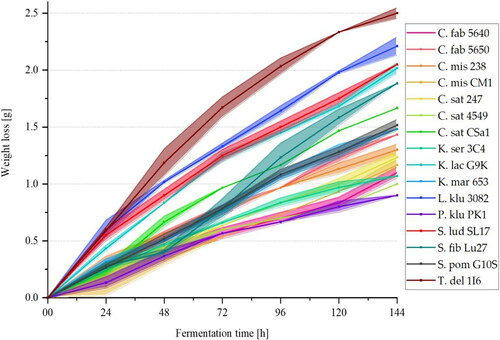
Table 3. Regression equations and corresponding coefficients of determination R2.
Table 4. Mean values and standard deviations (n = 3) of original wort (°P), apparent attenuation (%), ethanol content (% v/v) and pH value in the beers fermented by the 16 selected yeast strains.
Table 5. Sugar composition of the wort used for fermentation trials.
Figure 3. Mean values (n = 3) with standard deviations of wort sugar utilization in % of the 16 investigated yeast strains during fermentation from worts to non-alcoholic beers.
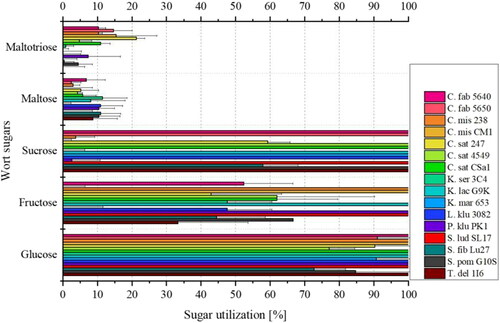
Figure 4. Mean values (n = 3) with standard deviations of yeast growth at 20 °C of ten yeast strains metabolizing more than 5% maltose in the HPLC analysis according to (C. fabianii 5640, C. saturnus 247 and CSa1, K. servazzii 3C4, K. lactis G9K, L. kluyveri 3082, P. kluyveri PK1, S. fibuligera Lu27, S. pombe G10S, T. delbrueckii 1I6) measured at an extinction of 600 nm in YP-media with 1% maltose over 168 h (7 days). S. ludwigii SL17 was included as reference yeast strain.
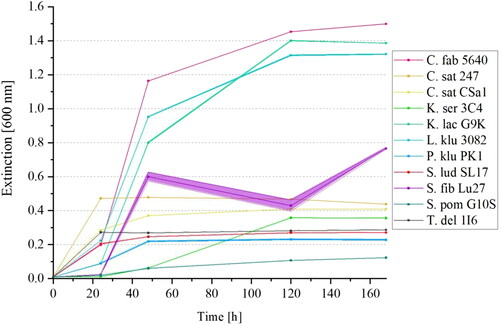
Figure 5. Mean values (n = 3) with standard deviations of yeast growth at 20 °C of seven strains (C. fabianii 5640 and 5650, C. misumaiensis 238 and CM1, C. saturnus 247 and CSa1, P. kluyveri PK1) metabolizing more than 5% maltotriose in the HPLC analysis according to and measured at an extinction of 600 nm in YP-media with 1% maltotriose for 168 h (7 days). S. ludwigii SL17 was included as a reference yeast strain.
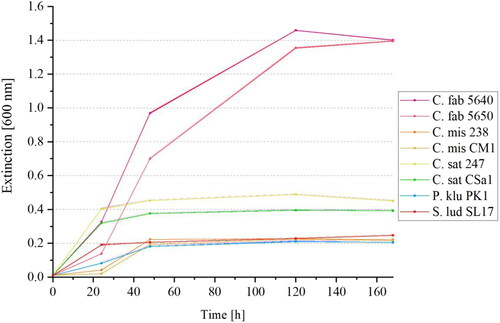
Figure 6. Chromatograms (HPLC) of the modified sugars glucose, maltose, maltotriose and maltotetraose of the 7°P wort and beer fermented with the yeast strain C. saturnus 247. The sugar molecules contain one molecule of 3-methyl-1-phenyl-5-pyrazolone (fructose) and two molecules of 3-methyl-1-phenyl-5-pyrazolone (glucose, maltose, maltotriose and maltotetraose).
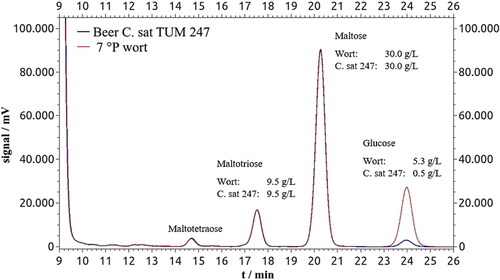
Figure 7. Heat map of volatile compounds in final non-alcoholic beers produced by the 16 investigated yeast strains during fermentation of brewer’s wort at 20 °C for 144 h and detected by headspace gas chromatography measurement. The 100% value represents the threshold of volatile compounds in beer, which is based on relative values from Meilgaard, Sannino et al., and Schieberle.[Citation56–58]
![Figure 7. Heat map of volatile compounds in final non-alcoholic beers produced by the 16 investigated yeast strains during fermentation of brewer’s wort at 20 °C for 144 h and detected by headspace gas chromatography measurement. The 100% value represents the threshold of volatile compounds in beer, which is based on relative values from Meilgaard, Sannino et al., and Schieberle.[Citation56–58]](/cms/asset/95346aed-d484-456f-a35a-f85af0e3ec9b/ujbc_a_2012747_f0007_c.jpg)
Table 6. Number of sensory assessors (n = 10) identifying the beers produced with the 16 different non-Saccharomyces yeast strains as “fruity”.
Figure 8. Aroma profiles of the beers fermented with the seven different Cyberlindnera yeast strains C. saturnus CSa1, 247, 4549, C. misumaiensis CM1, 238 and C. fabianii 5650, 5640.
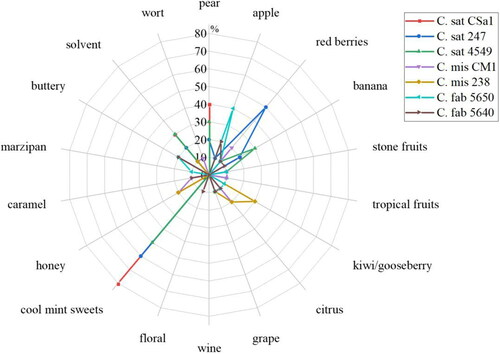
Figure 9. Aroma profiles of the beers fermented with the reference yeast strain S. ludwigii SL17 and the investigated yeast strains K. servazzii 3C4, K. lactis G9K, K. marxianus 653, L. kluyveri 3082, P. kluyveri PK1, S. fibuligera Lu27, S. pombe G10S, and T. delbrueckii 1I6.
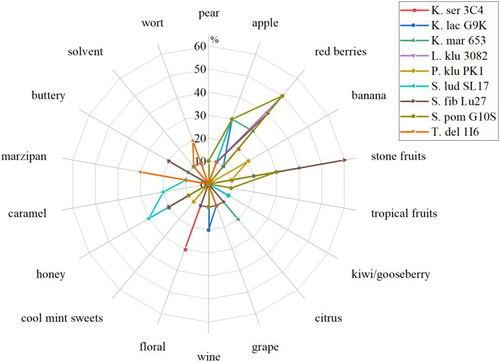
Figure 10. Principal Component Analysis (PCA) biplot with two principal components PC 1 and PC 2 showing the correlation of the beers produced with the 16 investigated yeast strains and the specific volatile compounds measured analytically as well as the individual flavor characteristics described by the tasters.
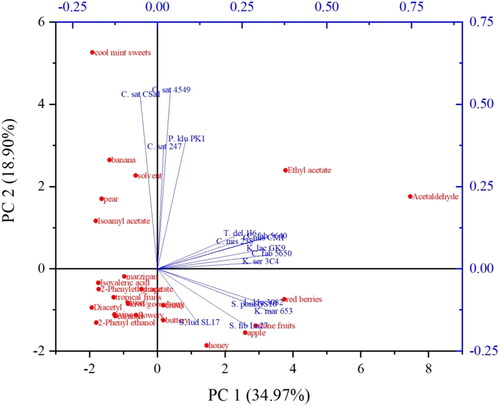
Table 7. Total DLG score according to the DLG evaluation scheme excluding the quality of bitterness as well as carbonation of the 15 investigated yeast strains and the reference yeast strain S. ludwigii SL17.
